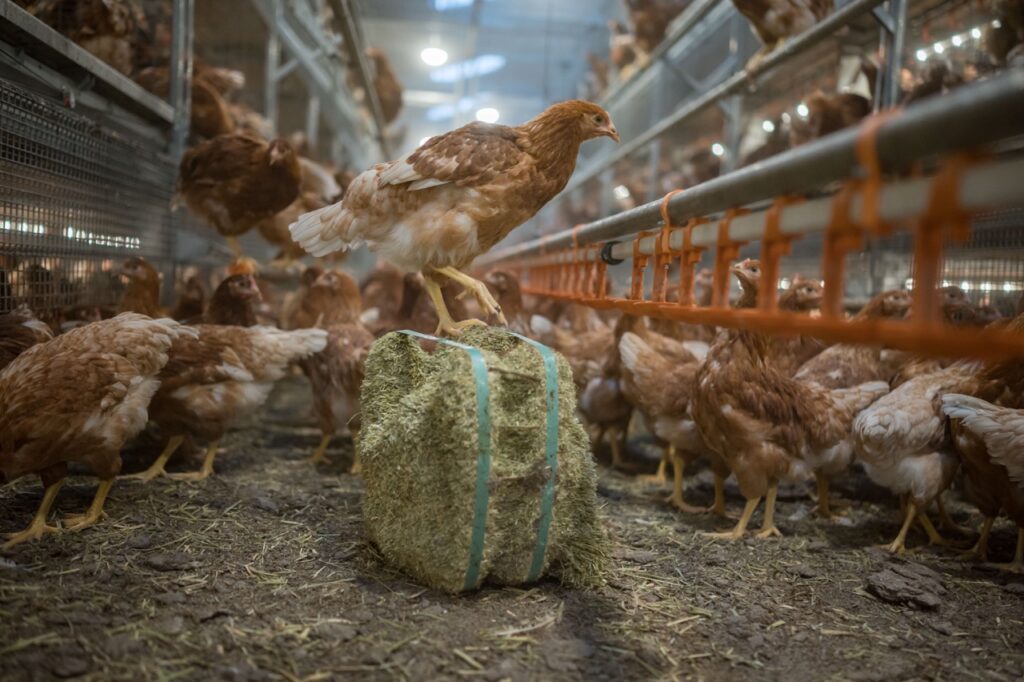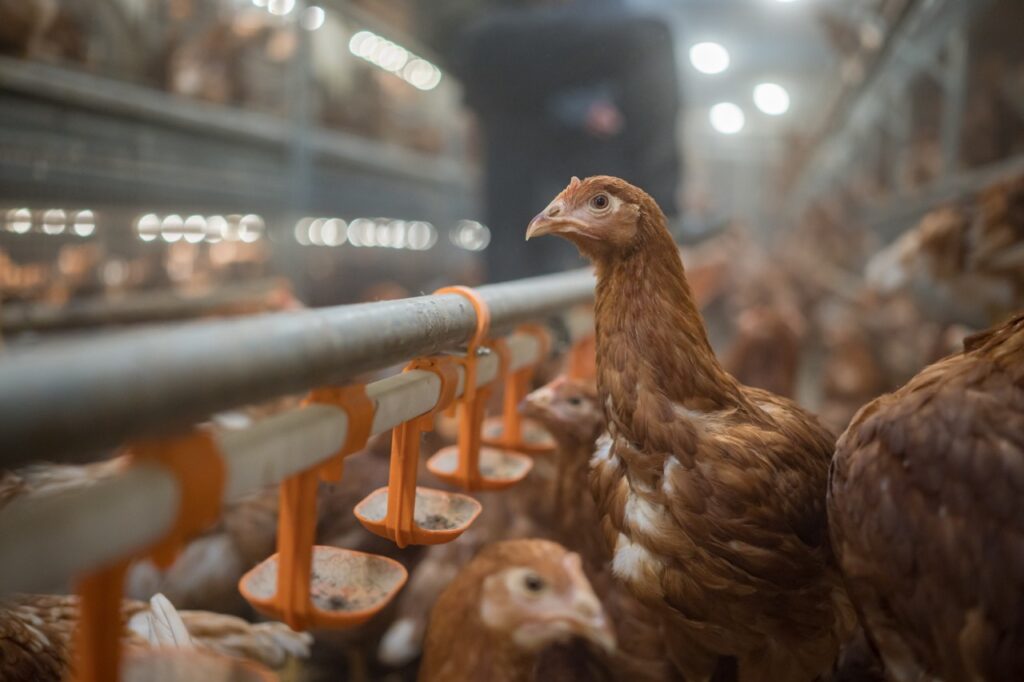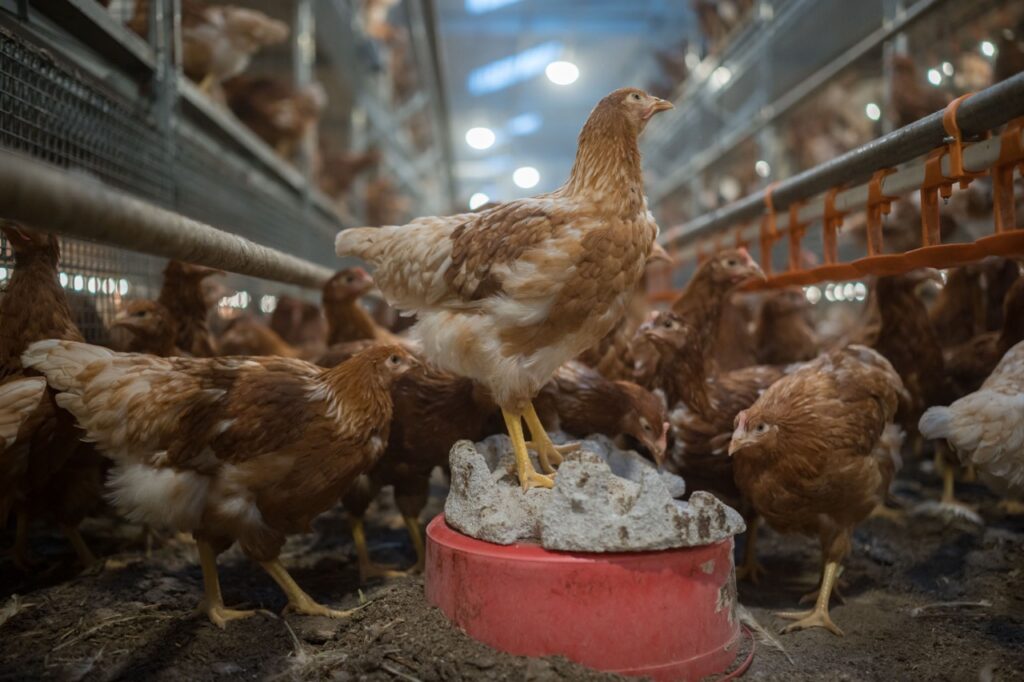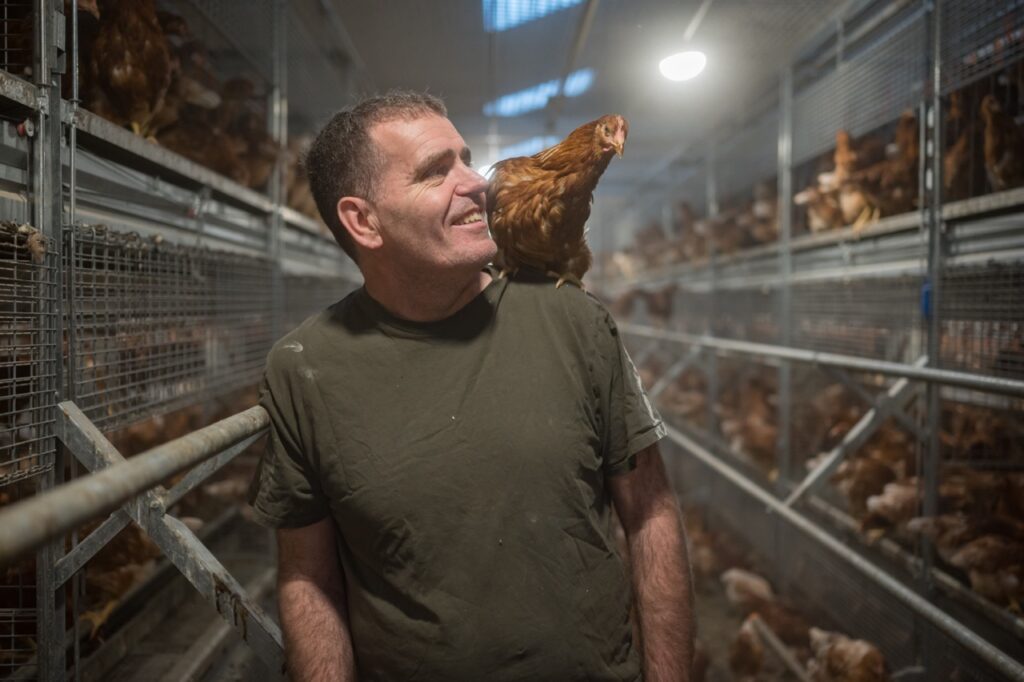Frank Janssen (55) is a calm and committed poultry farmer from Castenray in the south of the Netherlands. He has 150,000 pullets reared in two houses. He has also been employed as a technical consultant at Agromix from the very beginning. Frank has a wealth of experience and expertise that he is keen to share with fellow poultry producers at home and abroad. “I regularly visit other poultry farmers in neighbouring countries to provide advice,” he comments.
He proudly shows us around his new aviary house. The 14-week old pullets happily jump and hop between the different levels. They look healthy and full of life. Frank started using the renovated house in May 2022. ‘It seems as if the birds in this house achieve their target weight more easily and look much better,’ is Frank’s experience. “Of course, I can’t prove it, but my intuition tells me that the day-old chicks in this house mature better into adult layers.’’ Frank took a radical approach to the renovation and took into account all new and future requirements relating to animal health, well-being, quality and labour. Renewal was the key word. “I wanted to go off the beaten track, so to speak. That is why I chose the aviary housing system for rearing. This system is more in line with the systems used by layer farmers. That was one of the main motivations. The transition from the rearing farm to the layer farm will be much smoother.’’
Different systems
This rearing house is the first in the Netherlands to use a Filia aviary system. The biggest difference with the current systems is that the hens can range freely under the system. The birds have freedom of movement across the two levels, and access to feed and drinking lines. “Not much has changed in the last 10 years in terms of rearing pullets. However, changes can lead to new opportunities,” says Janssen. The KAT scheme (KAT is the supervisory body that monitors the origin and traceability of eggs from alternative poultry husbandry systems in Germany) imposes various requirements regarding the number of birds per square metre, amount of daylight, enrichment material etc. “Initially, the response as a sector is resistance as these schemes often involve extra costs. Now I am amazed at measures that actually have positive effects in practice. The ban on beak trimming has not led to any extra pecking. Enrichment material, more space, a good climate and more natural light have a calming effect on the birds. Genetics have also made contribution. The extra daylight also makes our work as a poultry farmer more pleasant,” Frank adds.



Space for 150,000 birds
Frank Janssen’s rearing farm has the capacity to house 150,000 birds divided over two houses. Together with a part-time employee, he ensures optimal conditions for these birds seven days a week. At peak periods, he can call in the help of a regular team of employees. This team helps him set up the day-old chicks, inoculate the flock, delivered the finished hens and clean the houses. Some 400,000 laying hens leave his farm annually. Around 80% remain in the Netherlands and the remainder is exported to Germany and Belgium. He is paid a fee by Agromx for each layer he supplies. His activities are fully aligned with the customer’s needs and demands. He changes the feed supplier and inoculation schedule accordingly. More than half the chickens he delivers are white. “It’s my favourite colour” Frank smiles “And always has been. I really enjoy seeing a lovely, fluffy white day-old chick mature into a healthy white layer. That’s what makes my work so satisfying.”’


Technical consultant
In 2011, Frank Janssen had one of Agromix’s first rearing farms for layers. In addition to signing a contract to rear the pullets, he also started working as a technical consultant for two to three days a week. “I currently advise some ten rearing farms in the South of the Netherlands. It’s a great combination,” he says. He visits the rearing farms three to four times during the rearing cycle of chicks to 17-week old laying hens. “Together with the farmer, our aim is to deliver the best and healthiest possible layers. We do this by analysing all the data we collect and monitoring and steering the health status as needed,” says Frank. In addition to collecting all data on feed, health and quality, according to Frank, the most important thing is keen and close observation of the flock. Look, look and look again. “ I can read a flock based on good observation. What I often do is take a look around the house first and then check the figures in the management program,” is how Frank explains his method, which is possible thanks to his many years of experience. He enjoys sharing experience and expertise with other poultry farmers. His work as a technical consultant also keeps him sharp and regularly visiting other poultry farmers allows him to build new experience and gain insights for his own farm. In addition to consultancy work in the Netherlands, he also regularly represents Pluriton by visiting rearing farms in the surrounding countries to advise new farmers. He sees this as a fine challenge for the years ahead in addition to running his own farm in Castenray.
“I can read a flock based on good observation. What I often do is take a look around the house first and then check the figures in the management program.''

